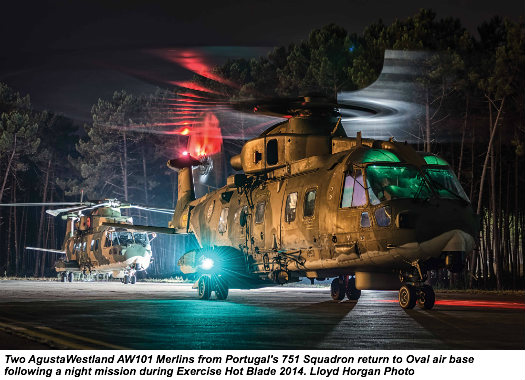
For two weeks in July, 40 aircraft and 3,000 personnel from six different nations came together in Portugal for Exercise Hot Blade 2014 — one of Europe’s most demanding and realistic joint interoperability training exercises.
Hot Blade is part of the helicopter exercise program (HEP) put together by the Luxembourg-based European Defence Agency, which was established in 2004 with the aim of improving European defense capabilities in the field of crisis management, and to sustain the European Union’s security and defense policy. The exercise integrates multinational elements on tasks including air assault, special operations aviation, combat service support, urban and emergency close air support, reconnaissance and security, combat search-and-rescue (CSAR), personnel recovery and medical evacuation (medevac). In addition to developing interoperability, the aim of Hot Blade is to provide aircraft crews with realistic training in hot, high, and dusty environments — similar to the conditions they’re likely to encounter in places like Afghanistan.

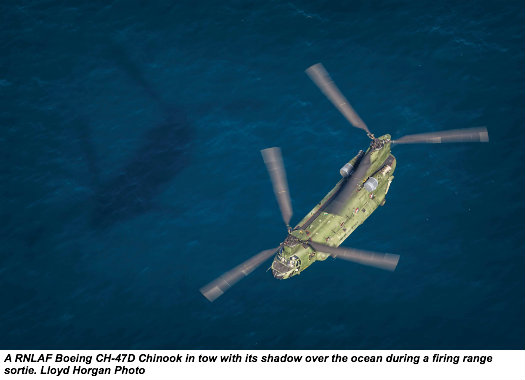
The European Defence Agency opted to keep the exercise at the Ovar Air Base in Portugal for the third consecutive year, finding the region’s weather and terrain ideal for training in high-density-altitude conditions. Military personnel from Austria, Belgium, Germany, the Netherlands, Portugal and the United Kingdom attended the exercise, with observers from Italy, Sweden, Hungary, Brazil and NATO Special Operation Forces Headquarters also in attendance. Participating aircraft included 27 helicopters; 10 fast jets; one Lockheed P-3 Orion used for intelligence, surveillance and reconnaissance; and two tactical air transport EADS CASA C-295Ms. The 40 aircraft combined to log an impressive 827 flight hours over 362 aircraft sorties.

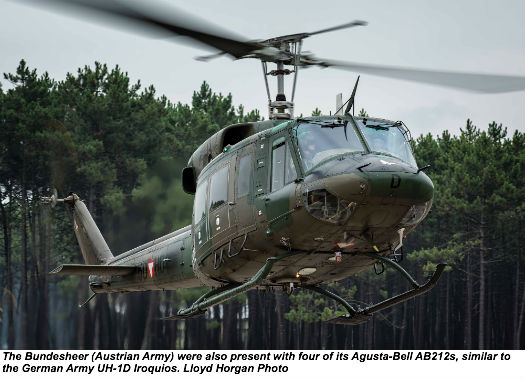

Hot Blade ’14 was well timed for the Puma force of 230 Squadron from Royal Air Force (RAF) Benson in the United Kingdom, which had spent a year without aircraft while its Airbus Helicopters SA330 Puma HC1 models underwent a £260 million (US$436 million) upgrade to HC2/Puma 2. The upgrades give the Puma a 40 percent increase in power, vastly improved communications equipment (including beyond line of sight), a quicker start up time, and an upgraded defensive aids suite. Squadron Leader Trevor Simpson explained that Hot Blade was a fantastic test for the Puma HC2. “The object of Hot Blade for us is to test the Puma 2 in a new environment, hot, high and dusty training, all whilst working with other European nations and planning multi COMAOs [combined air operations],” he said.
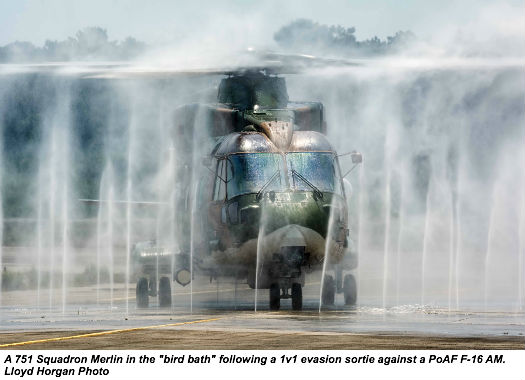
Each nation took lead of a COMAO during Hot Blade, with each one increasing in complexity — this was particularly impressive given that many participants were communicating in their second language. Simpson said that 230 Squadron faced some additional challenges with the COMAOs. “The density altitude limit of 5,000 feet of the Puma 2 meant that [we] couldn’t operate above that, so occasionally the CAMOAs had to be altered,” he said. “Even though we know the Puma can operate above that height . . . we’re unable to [do so] until it’s cleared.”

One of the main challenges for all participating nations was the need to keep aircraft serviceable. The requirements were similar to those of a current theater of operations, which reinforced the “train how we fight” mentality. With most aircraft flying multiple sorties during the two weeks, technical snags were to be expected. The problem for most was logistical — getting parts ready and shipped out quickly and efficiently, so as not to hamper mission readiness.
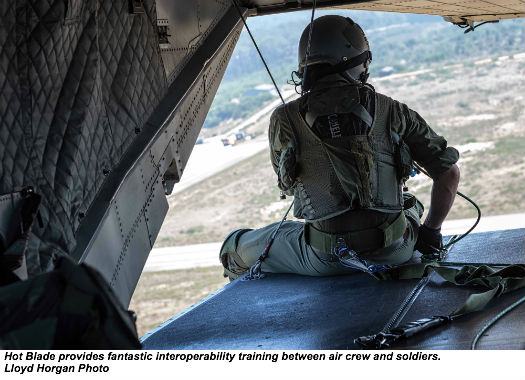
For the two-week exercise, 751 Squadron — the Portuguese Air Force’s search-and-rescue (SAR) squadron — opted to relocate from Monitjo to Ovar with four of its AgustaWestland EH101 Merlins, putting the mobility of the squadron to the test. Two of the Merlins were used for tactical operations, while the other two were used for SAR missions. Given that 751 Squadron’s daily work is open water SAR, the exercise was a chance for crews to refresh current skills and learn new ones should the need arise for an overseas deployment to a theater of operations. As many of the crews are regular participants in the Hot Blade exercise, they are now beginning to feel more comfortable flying with other nations. “Now [that] Hot Blade is in its third year here, we’re beginning to recognise and know other members from various nations,” explained Capt. João “Tex” Teixeira. “I think everyone finds different nation’s techniques, tactics and procedures a challenge sometimes, but we’ve all become more confident and comfortable when we fly with each other now.”
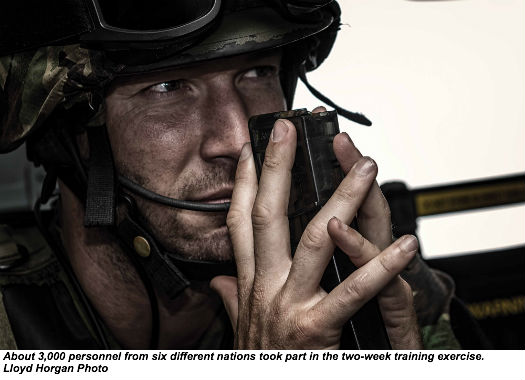
751 Squadron had five mission roles for Hot Blade: CSAR, troop transport, parachuting, mobility and assault, and medevac. Teixeira said the medevac mission was particularly complex. “It takes a lot of planning — we discuss contingency plans, space and height, de-confliction and safety,” he said. “With safety being the all-around primary focus for missions, once the mission has been drawn and planned, we always stick with [the plan] throughout the mission. If somebody drifts from the planning, that’s when things can start to go wrong and safety can become compromised.”
The medevac mission involved a total of nine rotary- and fixed-wing aircraft, with each one playing a vital role in the mission’s success. “We departed Ovar base as a package/formation and routed to Sao Jacinto to pick up the quick reaction force [QRF],” said Teixeira. “Our role in the mission was to pick up the casualties, so the QRF boarded Bundesheer [Agusta-Bell] AB 212s and an RAF Puma 2. From there we then routed to Seia aerodrome, which was being used as forward operating base (FOB). We landed and waited for the [AgustaWestland] AW109 and F-16 to clear the landing so the three BundesHeer AB 212s and single RAF Puma 2 could infill the QRF, [and then] we departed Seia to pick up the casualties.
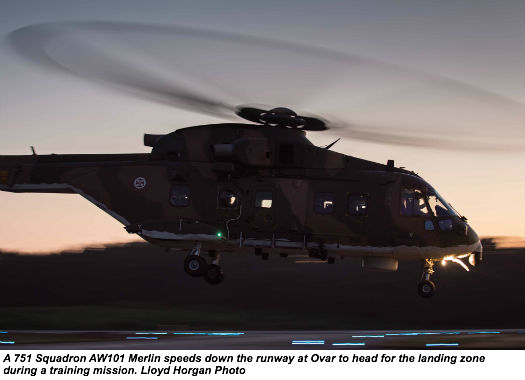
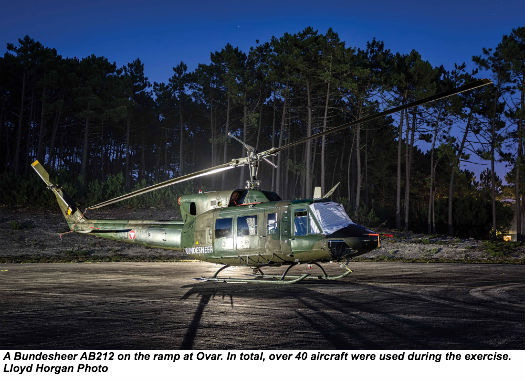
“The landing area was a dry dusty field so we knew the landing would be a brownout,” Teixeira continued. “With this comes the challenge of hovering as the dust picks up and all visual references are lost. Once we had successfully landed, the medevac team rushed to pick up the four casualties on stretchers and recover them back to the Merlin. Within minutes we had departed the landing area and routed back at low level, using the terrain as protection until we were out of danger, when we then gained altitude and returned back to Ovar.”

It was a complex mission that required four nations to work seamlessly together, and it demonstrated the importance of international exercises such as Hot Blade to crews who could be deployed to a real world theater of operations, where successful interoperability could mean the difference between life and death for those on the ground.

Lloyd Horgan is a UK-based aviation photographer specializing in military aviation. He has worked with both the Royal Navy and Portuguese Air Force Search & Rescue squadrons.





